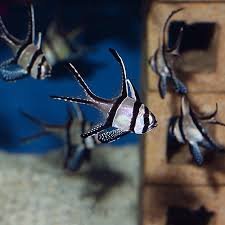
In Chinese culture, few symbols carry as much weight and significance as the dragon. Representing strength, power, wisdom, and good fortune, the dragon holds a prominent place in both historical and contemporary celebrations. Its presence in Chinese festivals, particularly during the Chinese New Year (Tết Nguyên Đán) and other important holidays, is a reflection of the deep cultural and spiritual beliefs embedded in Chinese society. This article will explore the role of the dragon in various Chinese festivals, delving into its symbolism, its association with different customs and rituals, and its impact on the celebrations that mark the turn of the year and other major events.
1. The Dragon and Its Symbolism in Chinese Culture
Before delving into the specific festivals, it is essential to understand the profound meaning the dragon holds in Chinese culture. Unlike Western depictions of dragons as fierce and destructive creatures, the Chinese dragon is viewed as a benevolent and auspicious being. It is a symbol of imperial authority, prosperity, and good fortune. The dragon is often associated with the Emperor of China, who was believed to be the “Son of Heaven” and a direct descendant of the dragon. It was also thought to have control over the weather, specifically rain, which was vital for agriculture in ancient China.
The dragon is considered a creature that bridges the heavens and the earth. Its mystical and spiritual qualities make it an enduring symbol in Chinese mythology, art, and, most importantly, in festivals and celebrations that honor and invoke its power.
2. The Dragon’s Role in Chinese New Year (Tết Nguyên Đán)
Chinese New Year, also known as the Spring Festival or Tết Nguyên Đán in Vietnamese culture, is the most important and widely celebrated holiday in China. It marks the beginning of the lunar calendar and is a time for family reunions, feasts, and festivities. The celebration lasts for up to 15 days, culminating in the Lantern Festival.
2.1. The Dragon Dance: A Tradition of Strength and Prosperity
One of the most iconic representations of the dragon during Chinese New Year is the Dragon Dance (舞龙, Wǔ Lóng). This traditional performance involves a team of dancers manipulating a dragon costume on poles, making it appear as if the dragon is slithering and soaring through the streets. The dance is believed to bring good luck and drive away evil spirits, making it an essential feature of the New Year celebrations. The dragon, in this context, represents vitality, power, and a hopeful future.
The Dragon Dance is often performed at parades, temple fairs, and community gatherings during the New Year period. The larger and more elaborate the dragon, the more it is believed to bring good fortune for the year ahead. These performances are accompanied by loud drumming and firecrackers, which are also meant to ward off evil spirits and celebrate the triumph of good over evil.
2.2. The Dragon and the Zodiac
Chinese New Year is also intricately tied to the Chinese Zodiac, a cycle of 12 animals, each representing a year in a repeating 12-year cycle. The Year of the Dragon is considered particularly auspicious and is associated with people born under this sign, who are thought to be strong, confident, and charismatic. When the Year of the Dragon arrives, it is seen as an especially lucky and prosperous year, one where great opportunities and achievements are likely.
The significance of the dragon in the Chinese Zodiac goes beyond mere superstition. It reflects the enduring connection between the celestial and the earthly realms, with the dragon serving as the ultimate symbol of harmony between nature and mankind.
2.3. Rituals and Customs Involving the Dragon
During the Chinese New Year, many rituals and customs are carried out to honor the dragon’s power and ensure good fortune for the year ahead. This includes offering sacrifices to the Dragon King, a deity worshipped for his control over rain and water, and conducting rituals to invite prosperity and abundance into homes and businesses.
At the heart of these rituals is the belief that the dragon’s influence can bring harmony to the home and community, ensuring a year of growth, good health, and happiness. Chinese New Year decorations often feature dragon motifs, especially in homes and businesses, where they are believed to bring luck and protect against negative energies.
3. The Dragon in Other Major Festivals
Beyond Chinese New Year, the dragon plays a significant role in other traditional festivals in China, each of which has its own unique connection to the dragon’s symbolism.
3.1. The Dragon Boat Festival (端午节, Duānwǔ Jié)
The Dragon Boat Festival, held on the fifth day of the fifth lunar month, is another major celebration in Chinese culture. It is a time to honor the legendary poet and statesman Qu Yuan, who drowned himself in the Miluo River to protest government corruption. To prevent fish from eating his body, people raced to the river in boats and threw rice dumplings into the water as offerings. Over time, this evolved into the exciting and colorful dragon boat races that are now a central feature of the festival.
The dragon boats, which are beautifully decorated and shaped like dragons, symbolize the community’s effort to ward off evil spirits and protect the river. The Dragon Boat Festival is often associated with the element of water, and the dragon is thought to be a protector of water sources, ensuring abundance and prosperity.
The festival also has strong ties to the Dragon King, a mythical deity who governs water and storms. Dragon Boat races, in this context, are seen as both a form of competition and a ritual to invoke the Dragon King’s blessing for favorable weather and good harvests.
3.2. The Lantern Festival (元宵节, Yuánxiāo Jié)
The Lantern Festival, celebrated on the 15th day of the Chinese New Year, marks the end of the New Year celebrations and is a time to celebrate the full moon. Lantern displays, traditional lion and dragon dances, and eating tangyuan (sweet rice balls) are key elements of this festival.
Dragon motifs are often incorporated into lantern displays, with large, illuminated dragon shapes making their way through the streets. The Lantern Festival is symbolic of the triumph of light over darkness and the renewal of hope. The dragon, as a symbol of strength and vitality, is often seen as guiding the way to a brighter future.
3.3. The Mid-Autumn Festival (中秋节, Zhōngqiū Jié)
The Mid-Autumn Festival, celebrated on the 15th day of the 8th lunar month, is a time for family reunions and honoring the moon. While the dragon is not as central to the Mid-Autumn Festival as it is to the Dragon Boat Festival or Chinese New Year, it still plays a role in some regional celebrations. In certain areas, dragon dances are performed as a way of honoring the harvest and ensuring a bountiful future.
4. The Dragon and Its Legacy in Modern Festivals
While the traditional festivals have remained central to Chinese culture for centuries, the significance of the dragon has extended into modern times. Today, the dragon continues to be a symbol of Chinese cultural pride and resilience, often seen in global celebrations of Chinese culture, such as in Chinatown parades around the world.
During these modern festivals, the Dragon Dance and other dragon-related rituals have become integral to promoting cultural heritage and fostering a sense of unity among people of Chinese descent. The symbolism of the dragon remains as powerful as ever, representing not only the strength of the past but also the hope for a prosperous future.
Conclusion
The dragon, as a symbol of power, prosperity, and divine protection, plays a crucial role in many of China’s most beloved festivals, including Chinese New Year, the Dragon Boat Festival, and the Lantern Festival. Whether through the vibrant Dragon Dance, the auspicious Year of the Dragon, or the ancient rituals that honor the Dragon King, the dragon’s presence is a reminder of the enduring values that shape Chinese culture.
Throughout these festivals, the dragon is not just a mythical creature; it is a living symbol of unity, strength, and the deep connection between humanity and the forces of nature. From ancient customs to modern-day celebrations, the dragon remains at the heart of China’s most important festivals, continuing to inspire hope, good fortune, and prosperity for generations to come.



